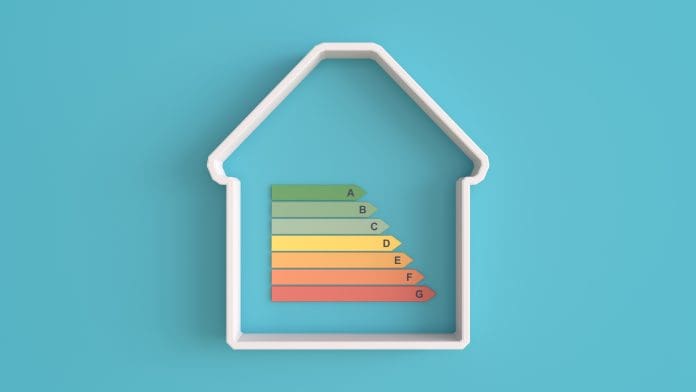Energy Performance Certificates need urgent reform if we are to successfully decarbonise buildings and meet net zero goals, says Fay Holland, senior energy policy adviser – heat and local energy at the Energy Systems Catapult
When the Prime Minister announced a new approach to net zero, the Energy Efficiency Taskforce, established in March this year, was disbanded without publishing its recommendations.
Proposals to increase the Minimum Energy Efficiency Standard for domestic private rentals from Energy Performance Certificate (EPC) ratings of E to C were dropped two years after being initially consulted.
But the goal of reaching net zero carbon emissions by 2050 remains – and decarbonising our homes and commercial buildings is vital to that effort. Buildings are responsible for 30% of the UK’s emissions, most of which contribute to heating. This underlines the importance of measuring and regulating a building’s energy performance.
Energy Performance Certificates are used for a wide range of purposes
Since EPCs were introduced in 2007, they have been used for an expanding list of purposes.
While they were intended to allow people buying, renting or building properties to compare energy performance easily, they are now used in policy relating to net zero, renters’ rights, fuel poverty and more.
This means that EPCs are increasingly used for purposes they are not well aligned with, creating the risk that policies do not achieve their goals.
The performance gap between the modelled energy use in EPCs and the measured energy use of buildings has been well documented.
There is also inconsistency in the results achieved by different Domestic Energy Assessors for the same property. An increased focus on measured energy performance, harnessing the potential of smart meter data and innovative technologies, could drastically improve the accuracy and consistency of EPCs.
The headline EPC rating is based on the energy efficiency rating. This measure reflects the cost of energy for the building, meaning that they do not incentivise building owners to adopt low-carbon heating technologies, such as heat pumps or heat networks.
Reforming EPCs will help to accelerate the market for retrofit measures
The higher unit cost of electricity compared with gas means that even highly efficient electrified heating systems are not encouraged by the system.
Our analysis found that a quarter of EPCs recommend installing a new gas boiler to improve the property’s rating, potentially locking in fossil fuel dependence for years.
The government recently increased the maximum subsidy available for switching to a heat pump or biomass boiler through the Boiler Upgrade Scheme to £7,500 after slow uptake in its first year. The ambition to reach 600,000 heat pump installations per year by 2028 remains. Reforming EPCs to better align with the goal of net zero buildings could help accelerate the market for low-carbon technologies and other retrofit measures such as insulation.
Considering local context
Another limitation of the current EPC system is that it treats each building in isolation, without consideration of local context or wider energy system needs.
This is the driving force behind proposals for a Smart Building Rating (SBR), which would sit alongside EPCs and indicate a building’s capacity to provide flexibility to the electricity system.
Shifting energy demand to times when it is abundant, clean and cheap will be essential as the UK moves towards greater dependency on intermittent renewables.
Doing so can reduce energy bills and drive down system costs. The SBR would reflect the presence of low-carbon technologies capable of delivering flexibility, such as electric vehicle chargers, heat pumps, smart thermal stores, batteries, and solar.
What is LEAP?
Local context is also important. As more and more UK councils adopt Local Area Energy Planning (LAEP), EPCs can provide a way to engage households with the changes expected in their areas.
An LAEP is a data-driven and whole energy system, evidence-based approach that sets out to identify the most effective route for the local area to contribute towards meeting the national net zero target and its local net zero targets.
Understanding the pathway their area will be taking can help property owners decide about their buildings. For example, an LAEP might identify an area suitable for a heat network or a priority area for heat pump roll-out. If EPCs give people recommendations that contradict LAEP plans, this could lead to confusion and disengagement.
At Energy Systems Catapult, we think there is an urgent need to update the EPC system if we are to succeed in decarbonising buildings and improving outcomes for households. Improving accuracy and consistency through greater emphasis on measurement, aligning the metrics with net zero and bringing in the wider system’s needs would all help unlock this potential.
In the coming weeks, we plan to publish our vision for a reformed EPC system, focused on outcomes and using digital platforms to empower property owners to plan for the future.
Fay Holland
Senior energy policy adviser – heat and local energy
Energy Systems Catapult
Tel: +44 (0)121 203 3700














